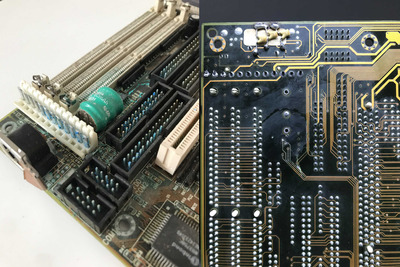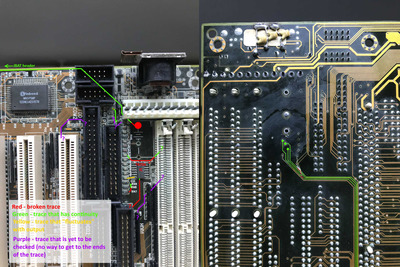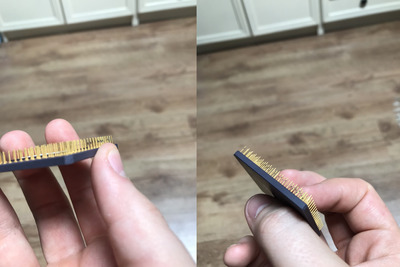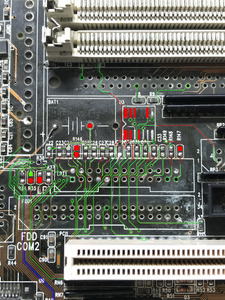First post, by kikipcs
- Rank
- Newbie
Been looking for a suitable 486 motherboard for my first personal 486 ever. Found it - MSI MS-4145. Manufactured in the 40th week of '95.
Very scarce information is available online on it - the most info I got on it was from Total Hardware '99. Seems everybody's talking about its older sis, the MS-4144.
PCI + ISA, 8 full-size cache slots, the ALi 1489A1/SE chipset, 5V/3.3V adjustment, WinBIOS (woah), lots of possible CPU configs and more. Came with a Cx486DX2v66 CPU. Seems perfect for a 486 board.
Well, almost perfect. Cue the buzzkills:
Initially I thought the leak was no biggie, but after treating the board with vinegar and brushes, the battery clapped right back at me.
The gouge doesn't seem THAT bad - just need to solder two wires into vias. The leak damage, however, is much worse. While I can't spot any damage to the power rails, some of the traces have been completely eaten away. So, I started poking away, trying to get a clearer view and in the process "reconstructed" the wires.
Here's the result so far:
There's this mystery IC that has its markings eaten away. I've barely been able to read a part of the lower text: 74(?, looks like K or P?)04. No idea what this IC is, honestly, but there's a trace running under it, and at least one damaged trace on the underside leads to it.
The scrapes and exposed traces are my work; I've been poking around trying to guess the continuity on them.
I've already ordered a diagnostic POST card; perhaps it will come handy if/when we get to powering this thing up.
Now, I come asking for your help. This is my first foray into the magical land that is the 486 architecture. While it is a foray I've been yearning for for a long time, I have to take it slowly 'round here. Thus:
1) There are these odd dark marks on the CPU. Is this an indication of something bad?
2) I am almost certain that I'm going to have to desolder the IDE, LPT COM1 and COM2 headers. But I haven't seen any of these that could be ordered online, so... is there any clean way to take these off in one piece or can I alternatively re-use the plastic shroud and just solder in a new header?
3) The memory slots might also need desoldering. Will the pins fall out when I desolder them?
4) The keyboard connector has this weird bodge. Can anyone guess what does it do?
5) Is the damage THAT bad?
And before anyone suggests: No, I am not going to throw it away. Not yet. I've been looking for a board like this for more than a year now and I'm going to give it all I got. (aaaand there's several factors as to why I'm dead set on getting this thing fixed)
Plus, I'm not that keen to spend another $60 on a "gamble" board... 😁
Looking forward to your replies. Stay safe out there, y'all!











